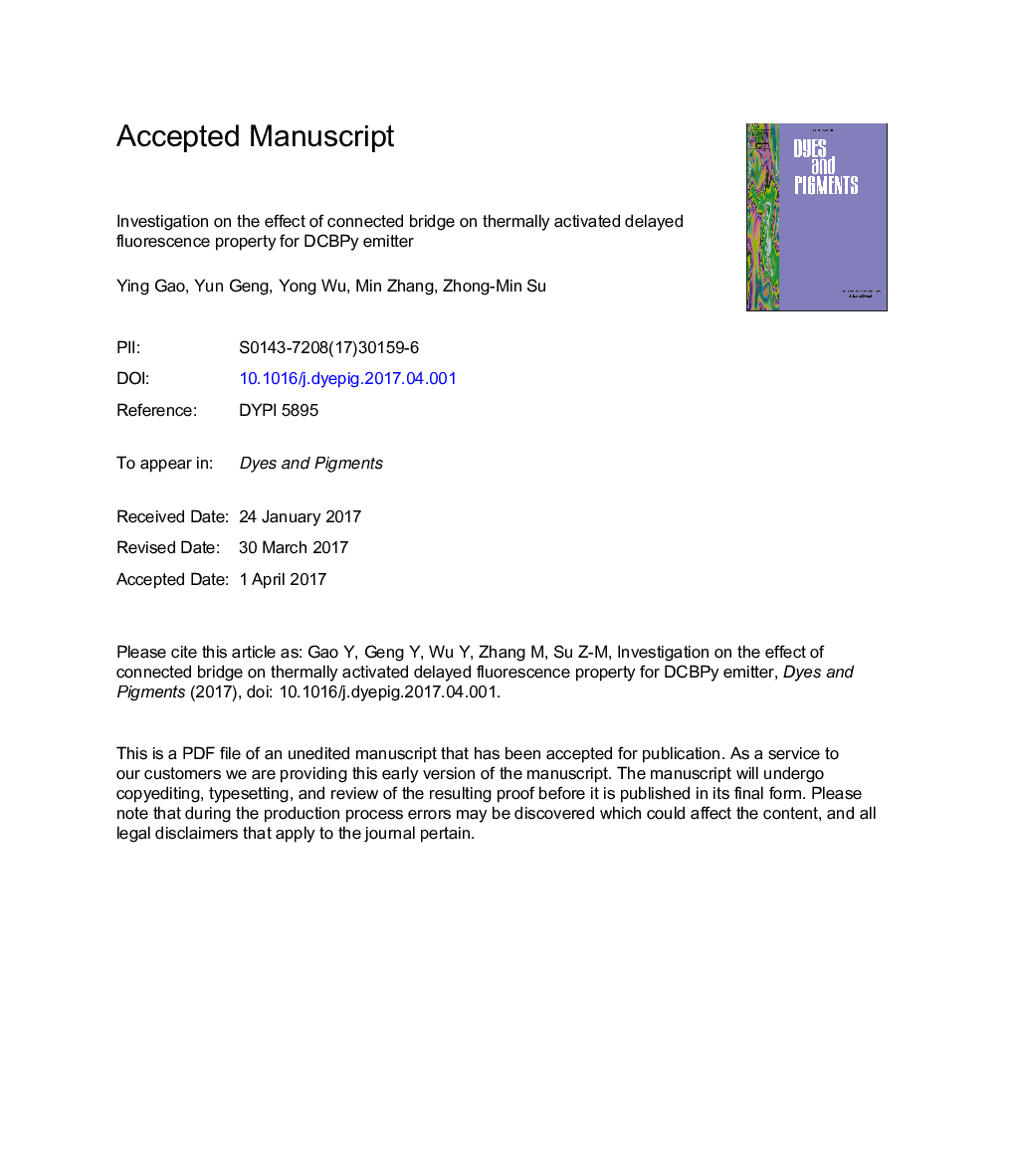| Article ID | Journal | Published Year | Pages | File Type |
|---|---|---|---|---|
| 4765782 | Dyes and Pigments | 2017 | 25 Pages |
Abstract
Previously, extensive efforts have been devoted to designing highly performance TADF material via varying the electron-donator (D) and electron-acceptor (A) units and tried the best to find a matching combination of D and A units with high external quantum efficiency. In present work, we have investigated the effect of modifying the connected bridge between D and A units on their electronic properties. Based on the reported thermally activated delayed fluorescence (TADF) molecule DCBPy (compound 1), four compounds 2-5 have been designed by modifying the connected bridge between D and A units. For predicting the accurate singlet-triplet energy gap (ÎEST), the tuning range-separated functional has been utilized to calculate ÎEST. The calculated normal mode reorganization energy (λ) for the non-radiative decay process displays that the λ of compounds 2-5 in the high-frequency region is noticeably reduced compared with compound 1, suggesting that the high-frequency CO stretching vibration is hindered through modifying the connected bridge between D and A units. Moreover, the radiative decay rate constant (kr) values of compound 2-5 are one order of magnitude higher than that of pristine compound 1. Besides, for our designed molecules, modifying the connected bridges noticeably increase their spin-orbital coupling matrix element () values, although the ÎEST values of compound 2-5 are greater than that of compound 1. As a consequence, for this kind of DCBPy compounds, modifying the connected bridge between D and A units maybe a valid approach to improve their TADF performances.258
Related Topics
Physical Sciences and Engineering
Chemical Engineering
Chemical Engineering (General)
Authors
Ying Gao, Yun Geng, Yong Wu, Min Zhang, Zhong-Min Su,
